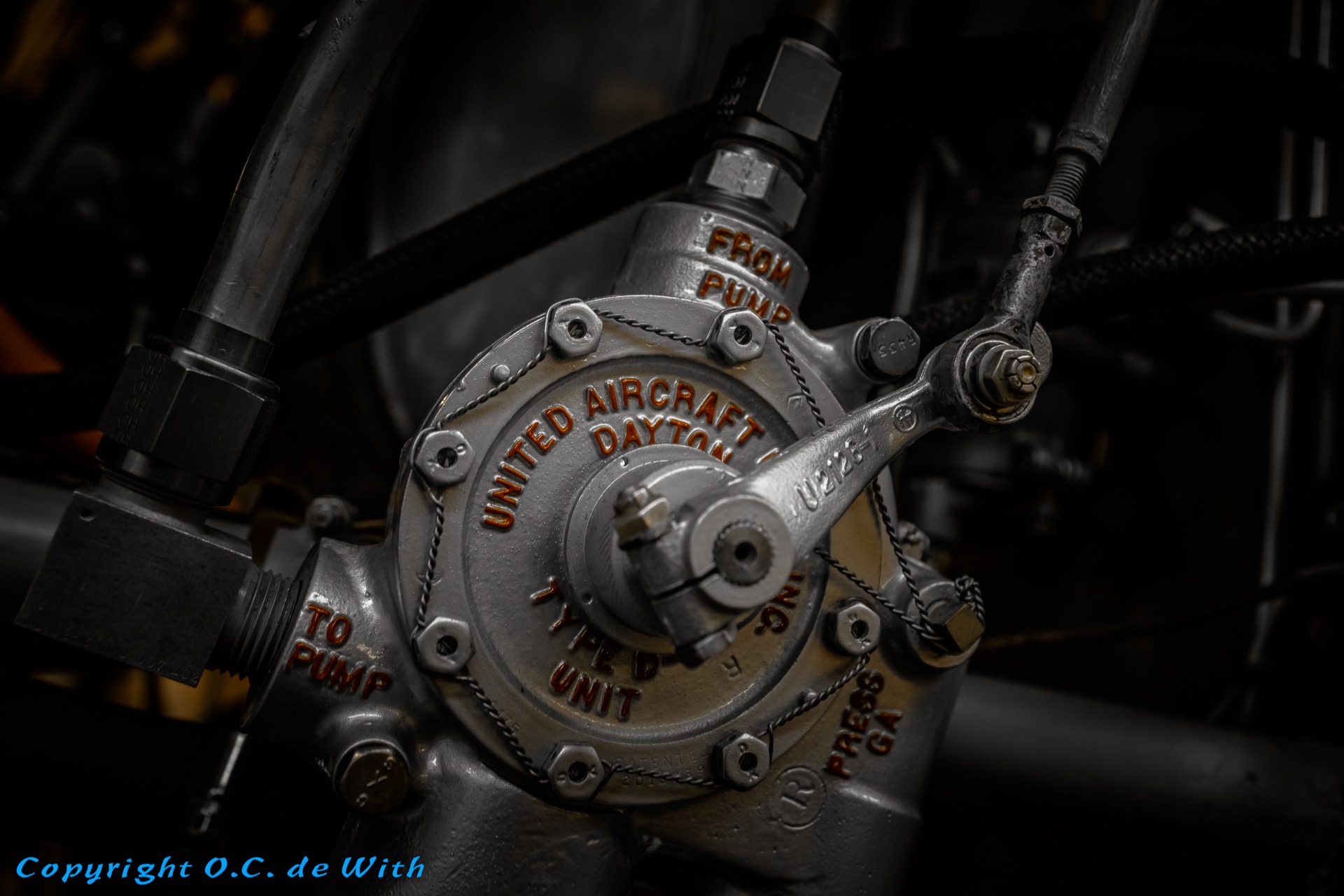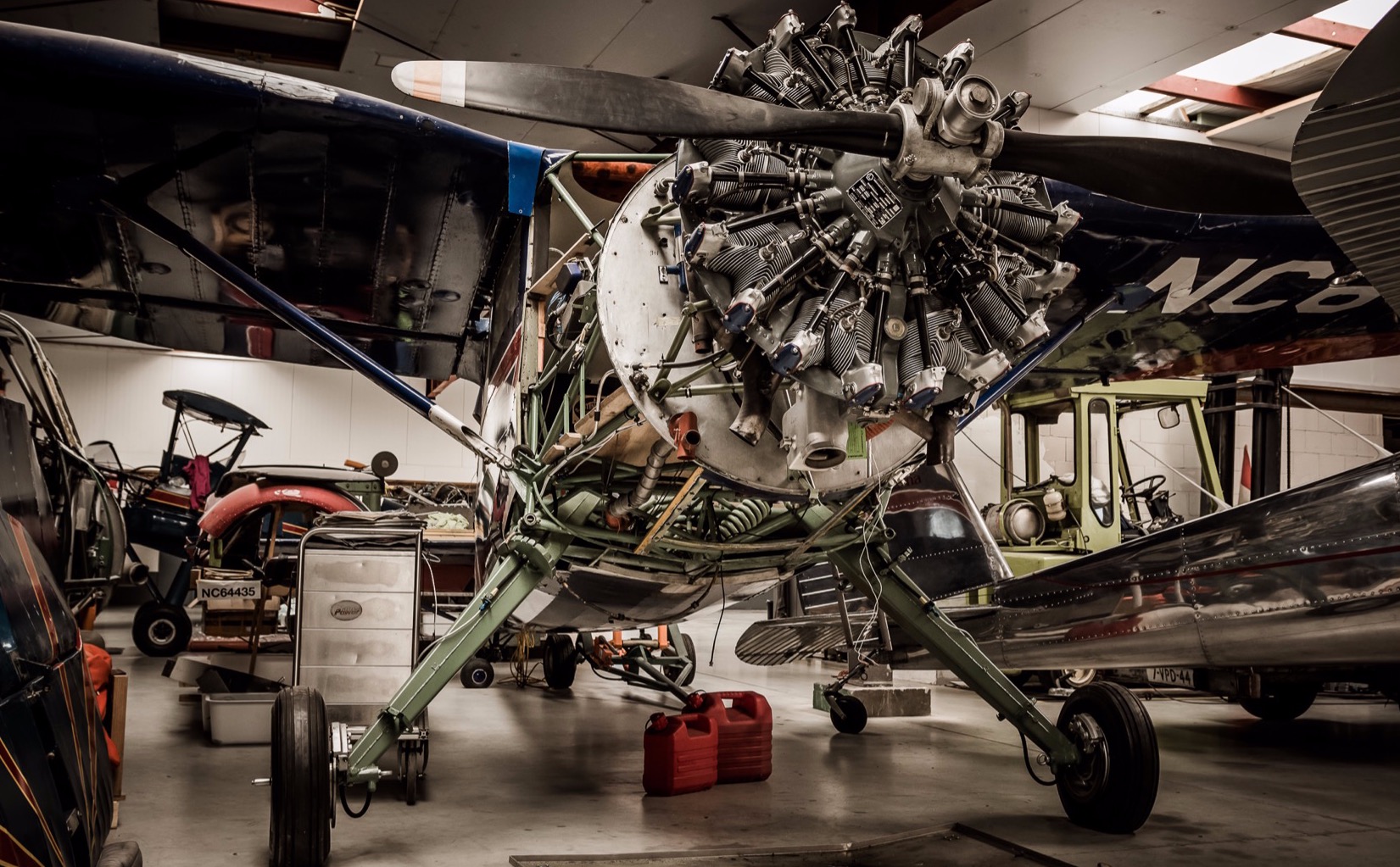Projects
''With Attention To Detail''
Egmond Vintage Wings has extensive expertise in the field of restoration of historic aircraft and their components. Currently, we have several restoration projects in progress, which are the Fokker D.21, Vultee BT-13 and Fairchild 24.
Our Knowledgeable engineers are capable of carrying out all manner of work to the highest standard possible. Backed up by our planning department there is no element of aircraft restoration we cannot undertake.
Egmond Vintage Wings is also specialized in making separate parts or parts that are no longer available. The parts we obviously do not have them in stock and are therefore only available to order, please contact us for more information.
In short, Egmond Vintage Wings is always busy with historic aviation to make a little richer with flying aeroplanes.
Current projects
Fokker D.21 '' 229"
Since 2014, Jack and Tom have been busy restoring the 229. However, many years before that many things had to be done and completed before we could even start the project
In 2012 Jack received a green light from the Dutch government to legally rebuild a Fokker D.21.
May 6 2014 was the date the rebuild of 229 officially began! During the first 3 years, Jack and Tom worked only together hard on the wooden wing. This 11-meter-long wing is made up of various parts that are made with precision and professionalism. Making the wing is one thing, the metal airframe is the other. The hull is made of special aviation steel tubes that all had to fit exactly according to the drawing. The craftsmanship required for making it is unimaginable. Partly because of that, the D.21 was built.
But not only the airframe consists of a tubular frame, but also the rudders and the horizontal and vertical tail surfaces are made from it. This is a very accurate job. When these parts were ready, work could continue, components were built in, the fabric was applied and the controls were adjusted and connected. The engine was also installed on the airframe after a detailed overhaul.
In December 2018, the official construction certificates were signed, and the first part of the certification was a fact.
Also the Royal Netherlands Air Force, Department of Military Aviation Authority under command of Commodore J.P. Apon played a role in the project. The Commodore officially permitted to let our D.21 legally fly under its former military registration "229".
In the meantime, almost all aluminium panels are ready and we are busy installing systems.
Not only the D.21 grown but also the team that is being worked with. This consists of a large group of skilled and enthusiastic people in addition to the family. Which accurately fixes every part, powerline cap or screw to the millimetre.
Jack, Tom and the team aspect to have her flying upcoming Winter of 2020!
"Together we make the dream come true"
Vultee BT-13 Valiant
A two in one project, 2 BT-13's are in restoration and are both part of our fleet!
The Consolidated Vultee BT-13/BT-15/SNV family of Basic Trainers first entered service in 1940 at the USAAF and USN and finally retired in the late 1960s. The Houston Wing aircraft is a BT-13A; about 7,000 of this model were built. It is estimated that only about 40 remain in flying condition today. The Houston Wing BT-13 spent 30 years as a public attraction on top of a Utah welding shop before being rescued and returned to flight status.
A standard BT-13A is equipped with a 450 HP Pratt & Whitney R-985-AN-1 radial engine which drives a fixed-pitch propeller (the Houston Wing's BT-13A has a variable-pitch prop). The landing gear is not retractable and is not equipped with fairings. Due to a large number of BT-13s produced, Pratt & Whitney was unable to supply enough engines to equip the full production. The BT-15 is the same basic aircraft as a BT-13 but is equipped with a 450 HP Wright R-975-1 radial engine.
Although the 'official' name of the BT-13 is the "Valiant", it is commonly referred to as the "Vultee Vibrator". The origin of the "Vibrator" nickname is unclear, with several different stories being credited:
When approaching a stall, the aeroplane shudders or vibrates noticeably During more "adventurous" manoeuvres, the canopy rattles or vibrates The powerful radial engine and fixed-pitch prop caused all the windows on the base to vibrate whenever a BT-13 took off
Also, the Vultee BT-13 for the Dutch has a special place. Indeed, it was this trainer who was an entire generation of student pilots during the period '40 - '45 who learned the skills of flying. But a few people know that many Dutch pilots flew these BT-13s
At the end of 1941, in connection with the rapid Japanese advance, the leadership of the Military Aviation Department of the KNIL decided to transfer the pilot training of the Dutch East Indies to Australia. Within weeks it became clear that the Australian continent was not safe from a Japanese invasion. It was decided to transfer all student pilots to America to set up a Dutch flying school there. On April 20, 1942, left the entire group, consisting of 334 men of the Military Aviation Department of the KNIL and 126 men of the Naval Aviation Service to the US.
The Dutch flying school which received the official name of Royal Netherlands Military Flying School (RNMFS) was established at the Jackson Army Air Force Base in the state of Mississippi. And This BT-13 was a part of the Dutch flying school.
The BT-13s are now undergoing restoration, The airframes are already completed, and we've started installing all systems and other components, also the engines have been overhauled in the engine shop of EVW maintenance.
We hope to have N56330 flying in 3-4 years from now. And the other BT13 is in 5-6 years from now.
Fairchild 24
The Fairchild Model 24, is a four-seat, single-engine monoplane light transport aircraft that was used by the United States Army Air Corps as the UC-61 and by the Royal Air Force. The Model 24 was itself a development of previous Fairchild models and became a successful civil and military utility aircraft. Several got into service in the USAAF and RAF. Also, the Dutch Indies Army Air Force had a few in service.
Sherman Fairchild withdrew from The Aviation Corporation in 1931 but retained control of the subsidiary Kreider-Reisner Company of Hagerstown, MD, which he renamed Fairchild Aircraft Corporation in 1935. The F-24's lineage goes back to the 1933 Kreider-Reisner three-seat Model 24C. The four-seat Model 24J was introduced in 1937 and was built with both Ranger and Warner engines. The Ranger-powered variant became the 24K in 1938, and 1939 saw the 24R and 24W variants powered by Ranger and Warner engines, respectively. The Ranger engine was manufactured by the Fairchild Aircraft Corporation.
The Fairchild 24 in our fleet shall be restored in the colour scheme of the Dutch Indies Army Air Force, as several served over there. It will be the only flying Fairchild 24 in Dutch colours. A quiet Dutch fleet is what we get than with the Fokker D.21, the Bücker Jungmann ( which is also in the Dutch Indies Army Air Force colours), the Vultee BT-13 which Dutch airman learned to fly at and finally this Fairchild 24 with Dutch colours!
The restoration has been started of FA 24, and we hope that over 4 years we have her flying!
Stinson L-5 Sentinel
The Stinson L-5 "Sentinel" began life as the pre-war Stinson model 105. and was built by the Stinson Division of Consolidated Vultee. When World War II broke out, the L-5 was redesigned and then entered into service as a liaison aircraft. It also flew in the artillery spotter role and as an air ambulance. The later model Stinson L-5 "Sentinels" had their fuselages modified to accommodate one stretcher patient. The Stinson L-5 "Sentinels" were manufactured between October 1942 and September 1945. During this time a total of 3590 of these unarmed, two-seat aircraft were built for the United States armed forces, making it the second most widely used light observation aircraft of the war. Personnel in all service branches commonly referred to it as the "Flying Jeep".
The Stinson L-5 "Sentinel" was primarily constructed from steel tubing and plywood and was covered with doped cotton fabric. Capable of operating from forward unimproved airstrips, the Stinson L-5 "Sentinel" delivered information and needed supplies to the front-line troops. On the return trip, it would evacuate the badly wounded soldiers to rear area field hospitals for medical attention. Our L-5 served for the U.S. 12th Army Air Force in Italy during WW2.
The L-5 will be restored to her old glory. when she is airworthy again we'll use her as a primary trainer for taildraggers, and with that, on track in the future, we can educate new pilots about flying at taildraggers!


